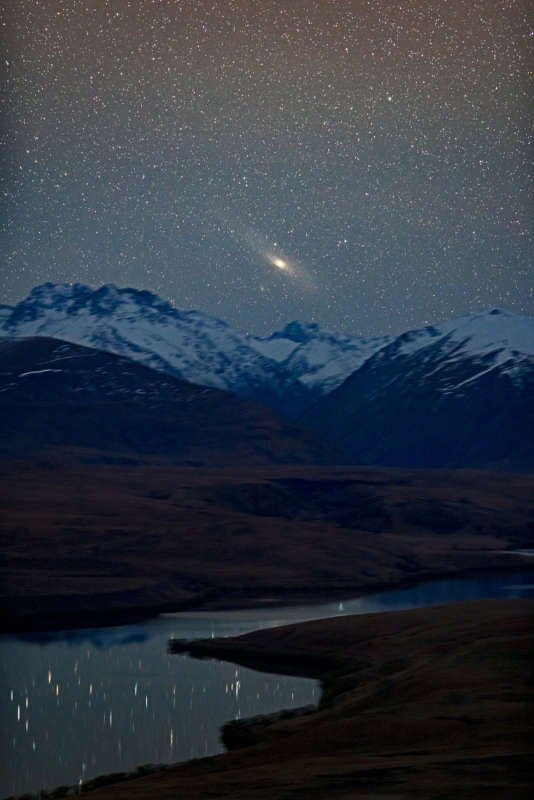
|
Credit & Copyright: Ian Griffin
(Otago Museum)
Explanation:
Looking north from
southern New Zealand,
the Andromeda Galaxy never gets more than
about five degrees above the horizon.
As spring comes to the southern hemisphere, in late September
Andromeda is highest in the sky around midnight though.
In a single 30 second exposure this telephoto image tracked
the stars to capture the closest large spiral galaxy
from Mount John Observatory as it
climbed just over the rugged peaks of the
south island's
Southern Alps.
In the foreground, stars are reflected in the still waters of
Lake Alexandrina.
Also known as M31,
the Andromeda Galaxy is one of the brightest objects in the
Messier catalog,
usually visible to the unaided eye as a small, faint, fuzzy patch.
But this
clear, dark sky
and long exposure reveal
the galaxy's greater extent in planet Earth's night,
spanning nearly 6 full moons.
|
January February March April May June July August September October November December |
| |||||||||||||||||||||||||||||||||||||||||||||||||||||||
NASA Web Site Statements, Warnings, and Disclaimers
NASA Official: Jay Norris. Specific rights apply.
A service of: LHEA at NASA / GSFC
& Michigan Tech. U.
Based on Astronomy Picture
Of the Day
Publications with keywords: M 31 - Andromeda galaxy
Publications with words: M 31 - Andromeda galaxy
See also:
